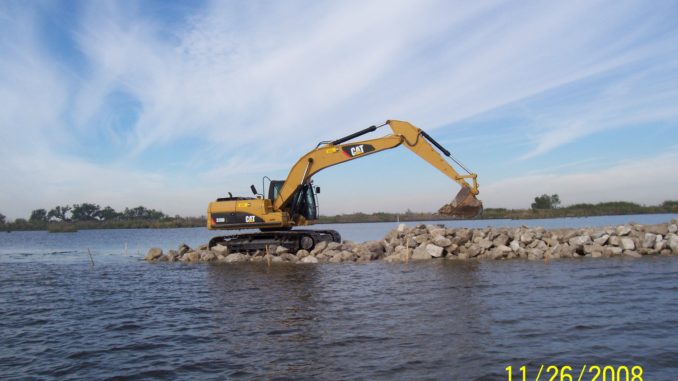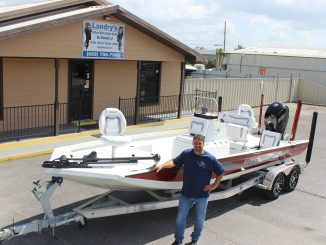
Project finally completed after 17 years expected to add 87 acres to parish over next 5 years
It may have taken 17 years, but 3.5 miles of the worse shoreline in St. Charles Parish is now behind rock breakwater with the completion of the Lake Salvador Shore Protection project.
The barrier, which began construction on the shore but is now located 200 feet off shore, is expected to add about 87 acres to St. Charles Parish over the next five years, according to Earl Matherne, the parish’s coastal zone management supervisor.
For Matherne, the project’s completion was a long time coming, especially since it was the first file he was ever handed as an employee of St. Charles Parish.
“The small, yellow folder contained a project that was already approved and was in the design phase with the department of natural resources and was about an $840,000 project,” Matherne said. “So, here I am, 17 years later, three phases later and $7.5 million later to report that the project is finished.”
The project area, which encompasses 1,200 acres, had suffered severe land loss caused by shoreline erosion, averaging nearly 13 feet per year from 1953 to 1983. The project is located along 3.5 miles of the north shore of Lake Salvador, bounded to the east by Baie du Chactas and to the west by Bayou des Allemands. Erosion had breached the lake rim at several locations, allowing tides and waves to erode the highly organic marsh surface. That caused the formation of large, shallow ponds in the interior marsh.
Phase 1 of the project tested four types of shoreline protection structures to determine their effectiveness in reducing shoreline erosion. Those included grated apex, geotextile tube, angled timber fence and vinyl sheet pile.
Phase II constructed a 9,000 foot rock shoreline stabilization structure along a section of the western lakeshore to protect the shoreline and adjacent marsh from wave-induced erosion.
Phase 3 called for the installation of 7,300 linear feet of foreshore rock dike to further reduce erosion.
None of the Phase 1 treatments were very successful in lowering shoreline erosions rate, while the Phase 2 structure not only slowed the rate of erosion, but reversed it during the trial period while maintaining structural stability and resistance to erosion.




Be the first to comment